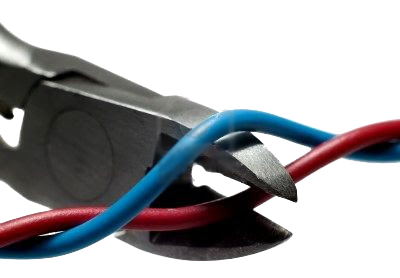The UK tax year ends on 5 April. For many people, the weeks before are a rush to put money into an ISA before the year’s annual allowance is lost.
This rush is despite them (maybe YOU?) having already had 11 months to open or add to an ISA in order to enjoy – forever – tax-free interest, dividends, and capital gains on shares.
Tsk. People, eh?
But what about those of us who do dutifully max out our ISAs every tax year? Those lucky enough to have cash leftover – even after making our pension contributions?
Or what about those who inherit a fat wodge, say, and haven’t been able to ISA-size it all yet?
And what about those people (*whistles* *looks at feet*) who years ago were dumb enough to buy shares outside of an ISA for literally no good reason?
After a few years and a strong stock market, even modest-sized investments made outside of tax wrappers can be carrying significant capital gains.
High-rollers / reformed muppets with this high-class problem – unsheltered assets with gains – should consider using up their annual capital gains tax allowance every year – by end of day 5 April.
I call the process defusing capital gains because it helps to nullify a future tax time-bomb.
Keep on top of growing capital gains
In the 2021/2022 tax year, you have a £12,300 capital gains tax (CGT) allowance.
This means you can enjoy £12,300 in gains CGT-free, across all your CGT-chargeable investments.
Remember, CGT is only liable when you realize the capital gain. This happens (in most cases) when you sell sufficient assets to generate more than £12,300 worth of gains (aka profits).
Until you sell, you can let your gains roll up – unmolested by tax.
Deferring gains like this is better for your finances than paying taxes every year.
But it’s even better for your long-term returns to pay little to no taxes on gains at all.
The trick? Sell just enough assets to use your CGT allowance in order to trim back the long-term tax liabilities you’re building up – but not enough to trigger a tax charge.
You may also want to realise some capital losses, to defuse even more gains.
That, in a nutshell, is defusing capital gains.
Remember, taxes can significantly reduce your returns over the long-term.
Yet paying capital gains taxes is also a bit optional, like high investment fees. Similar to high fees, by being vigilant over a lifetime most people can dampen or even sidestep their potential impact.
Let’s consider an example.
Defusing capital gains
We’ve written before about how to manage capital gains by using your CGT allowance to curb the growth of your CGT liabilities. Read that before this article.
Let’s now see an example of how you go about defusing a gain.
Don’t make it harder for yourself! Your broker, software, or a record-keeping spreadsheet can help you track the ongoing capital gains on each of your holdings. I’m showing the underlying calculations below for clarity. Make sure you keep great records if you invest outside of tax shelters! The paperwork can be painful. But it is necessary.
A worked example of defusing capital gains
Let’s say you invest £100,000 in Monevator Ltd – a small cap share that pays no dividend, but whose share price proceeds to compound at a very rapid 30% a year for three years.
(I wish!)
After this period you decide to sell up. You plan to use the money to buy an ice cream van and become a self-made mogul like Duncan Bannatyne.
The question: is it a good idea to defuse or not to defuse capital gains along the way?
Here are two scenarios to help us decide. I’ve rounded numbers to the nearest pound throughout for simplicity’s sake.
Scenario #1: You don’t sell any shares for three years
What if you don’t defuse? In this case your initial £100,000 of shares in Monevator Ltd compounds at 30% a year for three years.
At the end of the third year / beginning of the fourth year your shareholding is worth £219,700. You sell the lot. You have thus realized a potentially taxable gain of £119,700. (That is: £219,700 minus your initial £100,000).
Assuming the annual capital gains tax-free allowance is still £12,300 in four years time – and assuming this is the only chargeable asset you sell that year, so there are no other gains or losses to complicate things – you will be taxed on a gain of £107,400. (That is, £119,700-£12,300.)
The tax rate you’ll pay depends on your income tax bracket.
At the basic rate, you are taxed on capital gains on shares at 10% (18% for residential property). Higher-rate taxpayers pay 20% on their gains (28% on property).
From our previous article, you’ll know that the taxable capital gain itself is added to your taxable income to determine your tax bracket.
The current income tax bands from HMRC:

(Wales has the same bands. Scotland is different – see HMRC.)
In other words, you’ll pay a 10% CGT rate on your gains on shares if your overall annual income is below the £50,270 higher-rate threshold.
You’ll pay 20% on your gains if your total annual income is above £50,270.
Clearly, in our example most or all of the £107,400 in gains is going be taxed at a rate of 20%. So to keep things simple, let’s presume you’re already a higher-rate tax payer from your job.
At your CGT rate of 20% then, that £107,400 taxable gain will result in a CGT tax bill of £21,480.
You pay your tax. You are left with £198,220 after the sale.
Remember: to keep things simple I’m presuming you don’t have any capital losses that you can offset against this gain to further reduce your liability.
Scenario #2: You defuse your gains over the years
What if instead you sold enough assets every year to use up your capital gains tax allowance?
In the first year your holding in Monevator Ltd grows 30% to £130,000 for a capital gain of £30,000.
Remember: you are not charged taxes on your gains until you actually sell the shares.
You can make £12,300 a year in taxable capital gains before capital gains tax becomes liable.
So what we need to do is to sell enough shares to realize a £12,300 taxable gain, which we are allowed to take tax-free. (i.e. We cannot just sell £12,300 worth of shares).
First we need to work out what value of shares produced a £12,300 gain.
A quick bit of algebra:
x*1.3 = x+12,300
1.3x-x=12,300
0.3x=12,300
x=41,000
So £41,000 growing at 30% results in an £12,300 gain, which we can take tax-free under our CGT allowance.
We need to sell £41,000+£12,300 = £53,300 of our £130,000 shareholding.
You could reinvest this money into the same asset after 30 days have passed, according to the Capital Gains Tax rules. Or you could invest it into a different asset altogether.
In the second year, we start with an ongoing holding of £76,700. (That is, £130,000-£53,300.) Again it grows by 30%, so we end the year with £99,710.
But remember, this ongoing shareholding had already grown 30% in the previous year!
So the maths now is:
x*1.3*1.3 = x+12,300
1.69x-x=12,300
0.69x=12,300
x=17,826
So £17,826 has grown by 30% per year for two years to produce the £12,300 tax-free gain we want to use up our allowance.
We need to sell £17,826+£12,300=£30,126 of the £99,710 shareholding.
In the third / final year, we are down to a shareholding of £69,584, which grows by 30% once more to £90,459.
x*1.3*1.3*1.3 = x+12,300
2.197x-x=12,300
1.197x=12,300
x=10,276
Over the three years, £10,276 has grown by 30% every year to produce an £12,300 gain. (You can check this with a compound interest calculator).
We must sell £10,276+£12,300 to realize this gain and use up our CGT tax-free allowance.
That is, we need to sell £22,576.
This leaves us carrying a holding of £67,883.
In total over the three years we have sold £106,002 worth of shares, and realized £33,900 in capital gains entirely free of tax.
Let’s once again assume we still need all our money as cash for the ice cream van at the start of year four, as in Scenario #1.
The fourth year is a new year, so we’ve a new £12,300 capital gains allowance.
But now we are going to pay some capital gains tax.
The £67,883 holding we are still carrying was originally worth £30,898, before it grew at 30% every year for three years.
We pay tax on the gain only, which is:
£67,883-30,898 = £36,985
We have that personal allowance of £12,300:
£36,985-12,300 = £24,685
Our final (and only) tax bill on selling up the remaining £67,883 stake is therefore:
(£24,685) x 0.2
= £4,937
Compared to Scenario #1, we’ve saved £16,543 in taxes.
After paying capital gains tax we have £62,946 from our final share sale, plus the £106,002 we sold along the way. That gives us total proceeds of £168,948.
Before you start to type something in response to that number being less than the end total in Scenario #1, please read on!
Is it worth defusing capital gains?
I can think of plenty of things I’d rather do with £16,543 than give it to the Government, so I vote ‘yes’. Defusing is worthwhile.
Your mileage may vary.
But note that I’ve worked through a simplified example.
A 30% a year gain for three years in a row is very unlikely, even with winning shares. In reality, even with the best-performing companies or funds you’ll get up years and down years, likely spread over many more than three years.
If you invest a lot outside ISAs and SIPPs you’ll probably also have more than one investment that sees capital gains. So you’ll need to consider your gains and losses across your portfolio to best defuse gains.
Are you a millionaire who invests outside of tax wrappers? Then capital gains issues are a reason to avoid an all-in-one fund, if you want to be as tax-efficient as possible. If you instead buy and manage a basket of separate shares or funds, you may be able to defuse any growing CGT liability by offsetting gains against losses, as well as by using your personal allowance every year.
I’ve also completely ignored the issue of what you’d do with the money you liberate each year if you do defuse your gains along the way.
In fact, I’ve ignored overall returns altogether. I just wanted to show the tax consequences.
As I hinted at the end of the worked example, the eagle-eyed may have spotted that Scenario #1 leaves you with more money than Scenario #2 – despite Scenario #1’s higher tax bill.
This is simply a consequence of ever-more money being left idle in Scenario #2 after annual defusing.
In contrast, in the ‘pay all the tax at the end’ strategy, all the money grows at 30% for three years – clearly a great return – before you pay any tax.
In practice, cash released from defusing capital gains can of course be reinvested (though I wouldn’t bank on getting 30% returns each time if I were you!)
Reinvesting your gains
- £20,000 a year of the proceeds could be put into an ISA and thus be free of all future CGT. You can immediately re-buy exactly the same share you defused if you do so within an ISA (or in a SIPP). The 30-day rule doesn’t apply here.
- You could also sit on the money for more than 30 days before re-buying the same asset outside of an ISA or SIPP.
- Or you could immediately buy something different. Or just keep the proceeds in a cash savings account.
In Scenario #2, the cash released could have been reinvested in the same share in an ISA and/or a SIPP at the end of years one and two for further gains.
So just to complete the circle, if we again over-simplify and assume the proceeds of defusing in my example were reinvested at the same 30% rate, then you’d be left with £214,763 in total, which is £16,543 more than you were left with in Scenario #1.
Which is: exactly what we saved in taxes!
Fair’s fair?
You might argue I didn’t give the non-defusing strategy the very best shake.
For instance, we could have sold one chunk on the last day of the third tax year, and then the rest on the first day of fourth year, to use up two lots of tax-free allowance.
This would have slightly reduced the tax bill. But selling over two years like that counts as defusing capital gains!
So my example is good enough I think.
The last word
As I say, this was all just a fanciful illustration.
I chose a sky-high annual return number because the alternative was to illustrate a much more realistic 30-year defusing schedule. That’s fine in a spreadsheet, but even duller to work through.
We’re talking taxes here. I don’t want to try your patience.
Incidentally, a few people typically complain whenever I talk about mitigating taxes on investments.
We’re not fat cats here. We’re just ordinary people trying to achieve financial freedom on our own terms in an expensive and uncaring world.
And the reality is it’s pretty challenging to get rich by investing on a middle-class income. You can’t afford to leak money away by paying taxes you don’t have to.
Indeed I’ve been investing for two decades and I can confirm it’s at least as hard as sitting in your million pound house in London that you bought in the late 1990s with a 95% mortgage – at a price that has quintupled since, multiplying your initial deposit 80-fold, entirely tax-free to you – while you occasionally look up from the Guardian to moan about tax-dodging share ‘speculators’.
Tax mitigation is legal and sensible. People can use the money they save however they see fit.
And we admire those who eventually give it to good causes or invest in noble pursuits.
But handing over more than your share to the State just because you weren’t paying attention hardly seems like intentional living.
The bottom line is taxes will reduce your returns, but there are things you can do to reduce them.
Talking of which, reinvesting the money via your new annual ISA allowance from 6 April is one of the very best. Check out our broker table for some options.










